Overview
VS OTHER TECHNOLOGIES
Laser
Waterjet Can Do Things that Other Technologies Simply Cannot
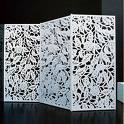
Vs Laser
Laser cutting is major used for thin metal sheet cutting. However, burning or heat affected zone is generated and thus, burnt marks are left at the points of cutting. Moreover, laser cutting does not perform properly on some alloys and ferrous metals, for example, aluminum and copper, especially when they are thick. Laser is not suitable to cut thick material. Standoff distance between nozzle and work piece is critical. Investment of laser cutting system is considerable. Operation cost is high. Maintenance is more specialized and more difficult and thus, higher cost
No heat is generated during waterjet cutting. Water jet can cut materials that are heat sensitive such as plastics and rubber. Waterjet is applicable in versatile materials, thin or thick, soft or hard, tough or brittle. Low fix overhead investment. Low operating and maintenance costs. When materials of work pieces are changed, no gases, optics or anything else is required to change.
Laser
- Very fast production in thin, non-reflective materials such as sheet steel.
- ccuracy to ±0.001" (±0.025 mm) or better in thin material.
Water Jet
- Can produce parts up to 5 cm thick in virtually any material while holding tolerances on the order of ±0.08 to ±0.1 mm).
- Can machine reflective, conductive and thicker materials such as stainless steel and aluminum, copper and brass.
- Cuts without melting, providing a smooth uniform surface with very little burr or dross.
- No heat-affected zone (HAZ), which may eliminate the need for a secondary operation to remove HAZ and makes conventional secondary operations, such as reaming or tapping, easier to perform.
- No noxious gas or vapors produced during cutting.
- Simple and rapid programming and set-up for short-run parts.
The key reasons that laser shops and laser users buy a precision abrasivejet is because it typically costs 1/3 the capital price of a laser and can work a much wider variety of materials, particularly aluminum and stainless steel over 6 mm to 13 mm thick. A shop that previously farmed out work to a laser house can afford to buy an abrasivejet and perform the work in-house, saving money and improving scheduling and flexibility. This also means that a laser house can afford to purchase a precision abrasivejet solely to work in thicker aluminum and stainless steel.
Plasma
Waterjet Can Do Things that Other Technologies Simply Cannot
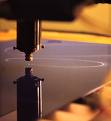
Vs Plasma
Obvious heat-affected zone are created at points of cutting done by plasma technology. The cutting tolerance is low as well. The cutting thickness is limited. Secondary finish is difficult.
Waterjet cutting does not generate any heat. Precision cutting. Cutting finish is good. Secondary finish is possible when necessary.
Plasma
- Relatively low capital costs.
- Very rapid production rates in thin sheet metal, once properly set up and programmed.
Water Jet
- No melting or heat-affected zone, so no heat distortion or crusted area to impair secondary machining processes such as tapping holes.
- Wider range of material capabilities.
- Wider range of thickness capabilities.
- Better precision in intricate parts
The key reason plasma shops buy precision abrasivejet is to do work that requires non-conductive material or precision parts.
Punch Press
Waterjet Can Do Things that Other Technologies Simply Cannot
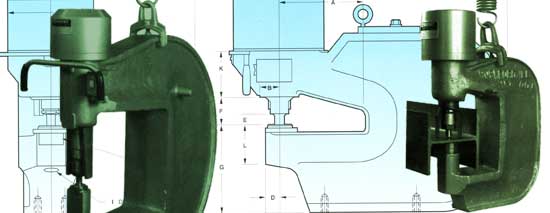
Punch Press
- A well-understood familiar technology.
- Rapid production in thin material once the machine is properly programmed and set-up.
- Relatively low capital cost (although tooling costs can add up).
Water Jet
- Very rapid programming and set-up for short run parts.
- No distortion of closely spaced parts.
- Minimal burr.
- Ability to work in a wide range of thickness, from sheet metal to plate.
- Ability to work in a very wide range of materials.
- No special tooling required for unusual shapes or profiles.
The key reasons punch press owners buy precision abrasivejet is to eliminate all the setup involved in doing short runs and prototype parts.
Diamond Tool
Waterjet Can Do Things that Other Technologies Simply Cannot
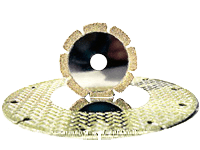
Vs Diamond Tool
Diamond tools are widely applied in glass, stone and ceramic industries. But they are limited to straight line or simple curve cutting. Diamond tool cutting tolerance is not satisfactory. Edge finishes are rough. Secondary finishes are must.
Cutting done by waterjet is precise. Waterjet could cut any kind of contour or profile that diamond tools cannot achieve. Cutting finish is good and no secondary finishes are required for general purpose applications.
Wire EDM
Waterjet Can Do Things that Other Technologies Simply Cannot
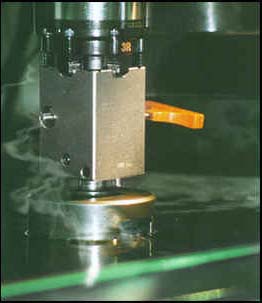
Vs Wire EDM
Low speed is the fatal drawback of EDM wire cutting. It requires an electronically conductive material and thus, generates heat-affected zones. Workable work piece sizes are also limited.
Wire EDM
- Extremely precise parts are possible (±0.025mm)
- Very thick parts (over 30 cm) can be made
- Intentional taper can be put into a part for die clearance and other uses
Water Jet
- Five to ten times faster in parts less than 2.5 cm thick but, at ±0.1 mm, less precise as well
- No Heat Affected Zone (HAZ), so no need for secondary operations to remove the HAZ or additional heat-treating to compensate for it
- Works well in non-conductive materials (such as glass, stone, plastic) as well as conductive materials
- Can pierce material directly without the need for a pre-drilled starter hole
- Can produce large parts at reasonable costs
- Simple and rapid programming and set-up with minimal fixturing
The key reasons that wire EDM shops buy a precision abrasivejet are for speed and to get into non-conductive materials. They also find less competition.
Oxy-Fuel
Waterjet Can Do Things that Other Technologies Simply Cannot
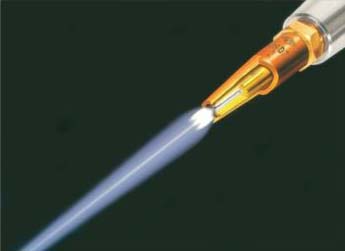
Vs Oxy-Fuel
Oxy-fuel flame cutting is widely used for metal cutting especially for thick metal. However, heat effect is obvious. Low cutting tolerance and bad cutting finish. Waterjet generates no heat. High cutting tolerance and good cutting finish.
Mill & Machining Center
Waterjet Can Do Things that Other Technologies Simply Cannot
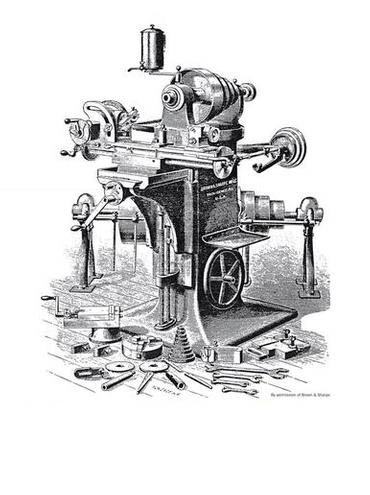
Mill & Machining Center
Mill and machining center usually require tailor made jigs and fixtures for every design of work piece. Waterjet requires no jigs and fixtures. Mechanical stresses are left on working surface. Low working precision and secondary finishes are required. Additionally, the metal waste by traditional machining is generally non-recycle versus those created by water jet.
Metal machining is generally done by removing unwanted metal to chip form until requested profiles or contours is done. Water jet cuts out a part, instead of metal chips, with one pass and this part is stored up until it is suitable for future proper design. The scrap is usually more valuable in solid form than chip form. Since water jet cuts out a part, there is remarkable less metal wastage versus traditional machining when water jet cutting is properly optimized for multi tasks jobs done from the same work piece.
Mill and Machining Center
- A well-understood familiar technology.
- Able to make three-dimensional parts.
- Rapid production if set up and programmed for long-run parts.
Water Jet
- Very rapid programming and set-up does not require a highly trained operator.
- Very low cutting loads means that fixturing is easier and also means that intricate and delicate parts can be machined.
- One cutting tool performs all machining functions in all materials, so there is no need to purchase and calibrate multiple cutting tools.
- Large cutting envelope compared to a machining center of comparable price.
- Minimal burr compared to conventional machining. Environmentally friendly. No oil-soaked chips and minimal scrap.
The key reasons traditional job shops buy a precision abrasivejet is to get new projects, become more competitive, and make more money.